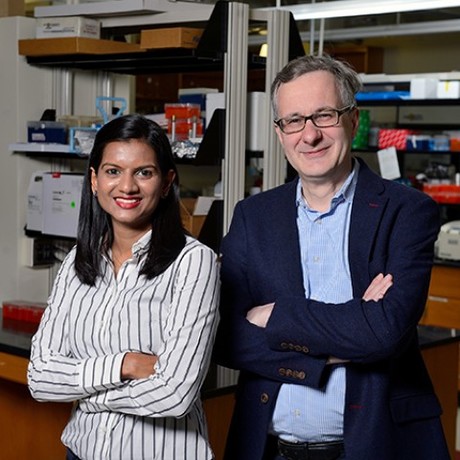Putting brakes on cancer's ability to spread

US researchers have discovered a biochemical signalling process that causes densely packed cancer cells to break away from a tumour and spread the disease elsewhere in the body.
The team led by John Hopkins researchers found that the combined use of two existing drugs — Tocilizumab and Reparaxin — disrupts this process and appears to significantly slow cancer’s tendency to travel, a behaviour called metastasis.
Tocilizumab is an approved medication for rheumatoid arthritis and is in trials for use in ovarian cancer cases. Reparaxin is being evaluated as a possible treatment for breast cancer.
The findings are important because 90% of cancer deaths are caused by metastasis, and anything that derails this activity could improve the prognosis for patients, the researchers said. The new signalling process turned up when the team took a closer look at cellular events that promote metastasis.
“We found that it was not the overall size of a primary tumour that caused cancer cells to spread, but how tightly those cells are jammed together when they break away from the tumour,” said lead author Hasini Jayatilaka, a postdoctoral fellow at Johns Hopkins’ Physical Sciences-Oncology Center.
“At a fundamental level, we found that cell density is very important in triggering metastasis.”
Jayatilaka and her colleagues cautioned that their treatment was tested in animal models, but not yet on human cancer patients. Nevertheless, they said the discovery contributes to a promising new focus for cancer research: disrupting the biochemical activity that prods cancer cells to spread through the body.
No commercial drugs are now being produced specifically to inhibit metastasis because drug companies believe the best way to stop the spread of cancer is to destroy the primary tumour from which it originates, said one of the study’s senior authors, Denis Wirtz, Johns Hopkins University’s vice provost for research and director of its Physical Sciences-Oncology Center.
“The pharmaceutical companies view metastasis as a by-product of tumour growth,” said Wirtz.
“Our study looked more closely at the steps that actually initiate metastasis. By doing this, we were able to develop a unique therapeutic that directly targets metastasis, not the growth of the primary tumour. This treatment has the potential to inhibit metastasis and thus improve cancer patient outcomes.”
The two key drivers of metastasis, Wirtz said, are cancer cells’ tendency to reproduce at a rapid rate and their ability to move through surrounding tissue until they reach the bloodstream, where they can then hitch a ride to spread the disease to other parts of the body.
By studying tumour cells in a three-dimensional environment that resembles human tissue, the researchers were able to determine how these activities begin. The team discovered that as two types of cancer cells reproduced and created more crowded conditions in the test site, these cells secreted certain proteins that encouraged migration. The researchers identified these proteins as Interleukin 6 (IL-6) and Interleukin 8 (IL-8).
“IL-6 and IL-8 seem to deliver a message to cancer cells, telling them to move away from the densely populated primary tumour,” said Jayatilaka, who recently earned her doctorate in chemical and biomolecular engineering as a member of Wirtz’s lab team and earlier received her undergraduate degree from Johns Hopkins’ Whiting School of Engineering.
In the team’s animal studies, the researchers found that applying Tocilizumab and Reparaxin blocked the receptors that enable cancer cells to get their relocation orders.
“In our eight-week experiment, when we used these two drugs together, the growth of the primary tumour itself was not stopped, but the spread of the cancer cells was significantly decreased,” Jayatilaka said. “We discovered a new signalling pathway that, when blocked, could potentially curb cancer’s ability to metastasize.”
The findings have been published in Nature Communications. The other senior authors of the paper were Daniele M Gilkes of the Oncology and Pathology departments in the Johns Hopkins University School of Medicine and Rong Fan of the Department of Biomedical Engineering at Yale University. Other Johns Hopkins University co-authors were Pranay Tyle, Julia Ju, Hyun Ji Kim and Pei-Hsun Wu. Other co-authors from Yale were Jonathan J Chen and Minsuk Kwak. Jerry S H Lee of the Johns Hopkins Department of Chemical and Biomolecular Engineering and the Center for Strategic Scientific Initiatives at the National Cancer Institute was also a co-author.
Breakthrough blood test for endometriosis developed
Scientists identified 10 protein biomarkers, or 'fingerprints' in the blood, that can be...
A simple finger prick can be used to diagnose Alzheimer's
A new study is paving the way for a more accessible method of Alzheimer's testing, requiring...
Experimental blood test detects early-stage pancreatic cancer
The new test works by detecting two sugars — CA199.STRA and CA19-9 — that are...




